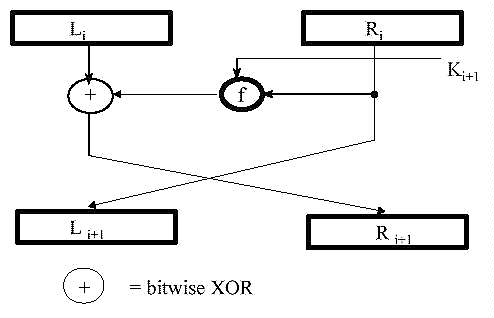
28 January 1999
Source:
http://csrc.nist.gov/encryption/aes/round1/rsaconf99.pdf
(1,046K)
[NIST presentation at RSA 99.]
Miles Smid and Ed Roback
National Institute of Standards and Technology
U.S. Department of Commerce
• What has been done so far• Candidate Algorithms and some of their properties
• Next Steps
• Request for Formal Comments
• Questions
• Selection of a standard that supports (at least) 128, 192 and 256 bit key sizes; block size of 128 bits• Worldwide-royalty free
• More secure than Triple DES
• More efficient than Triple DES
• Announcement of intent to develop AES and request for comments, January 2, 1997• Workshop on proposed requirements and procedures, summary of comments, April 15, 1997
• Informal draft requirements and procedures, June 16, 1997
• Formal call for candidate algorithms, Sep. 12, 1997
• Submission for pre-review, April 15, 1998
• Close of call, June 15, 1998
• Notification to submitters, July, 1998
• First AES Candidate Conference and beginning of Round 1 evaluation, August 20-22, 1998
• NIST to establish informal discussion group at www.nist.gov/aes for each candidate, Sept. 1998
• Formal FR call for public comments, Sept. 14, 1998
• Twenty-one packages received• NIST verified that legal documents were completed
• NIST verified that responses were provided for all items
• NIST attempted to run code and verify Known Answer Tests
• Six packages found to be incomplete
• No cryptanalysis initially performed
• Australia– LOKI97 Lawrie Brown, Josef Pieprzyk, Jennifer Seberry• Belgium
– RIJNDAEL Joan Daemen, Vincent Rijmen• Canada
– CAST-256 Entrust Technologies, Inc.– DEAL Outerbridge, Knudsen
• Costa Rica
– FROG TecApro Internacional S.A.• France
– DFC Centre National pour la Recherche Scientifique (CNRS)• Germany
– MAGENTA Deutsche Telekom AG• Japan
– E2 Nippon Telegraph and Telephone Corporation (NTT)• Korea
– CRYPTON Future Systems, Inc.• USA
– HPC Rich Schroeppel– MARS IBM
– RC6 RSA Laboratories
– SAFER+ Cylink Corporation
– TWOFISH Bruce Schneier, John Kelsey, Doug Whiting, David Wagner, Chris Hall, Niels Ferguson
• UK, Israel, Norway
– SERPENT Ross Anderson, Eli Biham, Lars Knudsen
• The RC6 Block Cipher– Ron Rivest, RSA Laboratories– Tuesday, 2 PM, Cryptographer’s Track
• MARS: IBM’s AES Proposal
– Dave Safford, IBM– Tuesday, 3 PM, Cryptographer’s Track
• The Twofish Encryption Algorithm
– Douglas Whiting, Hi/fn– Tuesday, 4 PM, Cryptographer’s Track
• Security– Actual Security– Random permutation properties
– Mathematical basis
– Other security factors raised
• Cost
– Computational efficiency– Memory requirements (hardware and software)
• Algorithm and Implementation Characteristics
– Flexibility– Hardware and software suitability
– Simplicity of design
• How well algorithms meet criteria• Any related intellectual property
• Cross-cutting analysis of multiple algorithms
• Overall recommendations and rationale
• Based on Previous Schemes and Methods• Cryptanalysis
AES Candidate Precursor(s) • CAST-256 CAST-128 • DEAL DEA • LOKI97 LOKI 89,91 • RC6 RC5 • SAFER+ SAFER
Algorithm Rounds DEAL 6,6,8 DFC 8 E2 12 LOKI97 16 MAGENTA 6,6,8 TWOFISH 16
Algorithm Rounds Cycles CAST-256 (MF1) 48 12 MARS (MF3) 32 16 RC6 (MF2) 20 10
Algorithm Rounds CRYPTON 12 Rijndael 10,12,14 SAFER+ 8,12,16 SERPENT 32
Algorithm Rounds Type FROG 8 Key Interp. HPC 8 Omni
• LOKI97– Rijmen and Knudsen– Differential: 256 chosen plaintexts
– Linear: 256 known plaintexts
• FROG
– Wagner, Ferguson, and Schneier– Differential: 258 chosen plaintext
– Linear: 256 known plaintexts
• MAGENTA– Biham, Biryukov, Ferguson, Knudsen, Schneier, Shamir– 264 chosen plaintexts, 264 steps
– 233 known plaintexts, 297 steps
• DEAL
– 270 chosen ciphertexts, 2121 steps, (Lucks, 128)– 270 , chosen plaintexts, 2121 steps, (Knudsen, 192)
– 256 chosen ciphertexts, 2145 steps, (Lucks, 192)
– Meet in middle, 2224 steps, (Knudsen, 256)
• SAFER +– 2 known plaintexts, 237 memory, 2241 steps, (256, Kelsey)– 256 chosen plaintext encrypted with 2 keys, 2216 steps, (256, Kelsey)
• CRYPTON– Weak keys, 2224 complexity, (Vaudenay, et. Al.)– S-boxes to be changed (2 to 4)
• DFC
– Weak keys, reduce to 6 round cipher, prob. 2-64 , (Coppersmith)– Weak keys, pt=ct, prob. 2-128 , (Coppersmith)
• Claimed Attacks– LOKI97, FROG, MAGENTA, DEAL, SAFER + (256)• Weak Keys 256-bits or less
– DFC, CRYPTON• So far pretty good
– MARS (MF3), RC6 (MF2), RIJNDAEL (SP), TWOFISH (F), E2 (F), CAST 256 (MF1), SERPENT (SP), HPC (Omni)
• Encryption/Decryption Times• Key Setup Times
• Memory Requirements
NIST Platform:
IBM-compatible PC/ Intel Pentium-pro Processor 200MHz, 64MB RAM
• Provable security against classes of attacks (DFC)• Cost/Efficiency
– Software– Hardware
• Architectures 8/32/64 bits
• Intellectual Property
• Public review of candidates, Aug. 20 - April 15, 1999• Submissions of analysis for AES2, Feb 1, 1999
• Second AES conference, March 22-23, 1999
• Formal submissions of analysis for Round 1, April 15, 1999
• Announcement of (about) five finalists, Fall 1999
• Public Review of finalists, 6-9 months
• Third AES Conference
• Selection of AES Algorithm, 2000
• Making AES a FIPS, 2001
• How well algorithms meet criteria– Security, Cost, and Implementation Characteristics• Any related intellectual property
• Cross-cutting analysis of multiple algorithms
• Overall recommendations and rationale
• e-mail: AESFIRST ROUND@nist.gov
Rome, ItalyMarch 22-23, 1999
• Anyone can test candidate algorithms• Anyone can evaluate candidates
• This process requires PUBLIC participation
• To follow what is going on with AES, visit http://www.nist.gov/aes
[End]